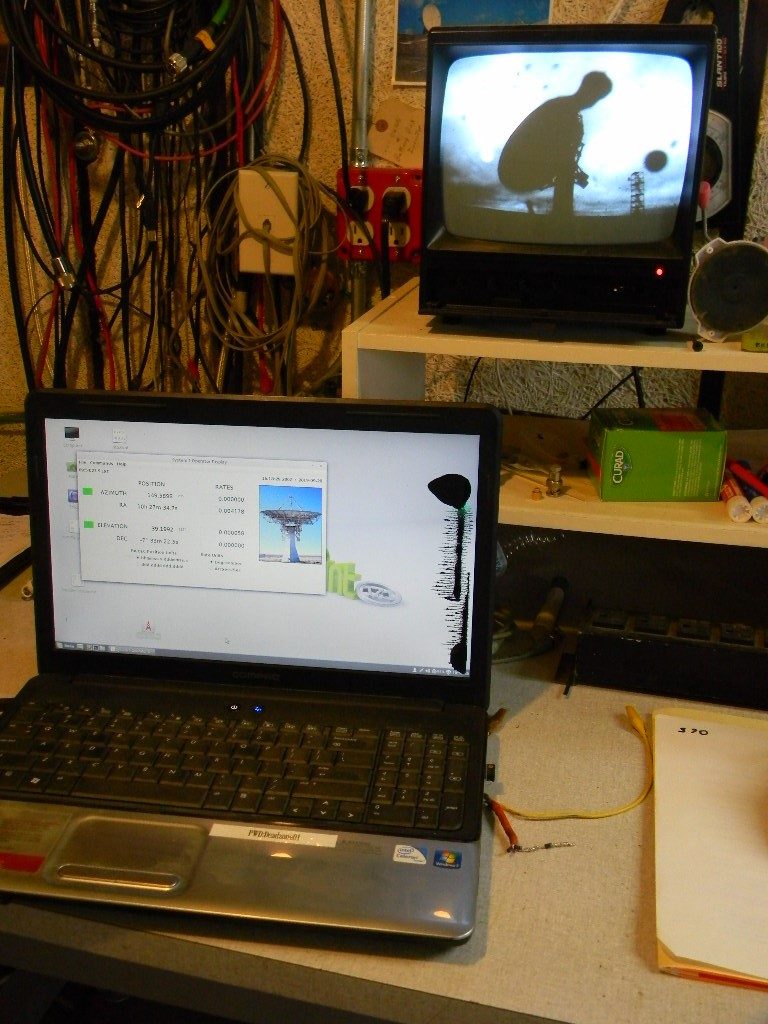by Gary Agranat
DSES Participants: Gary Agranat, Ed Corn, Bob Haggard, Bill Miller, Steve Plock.
Ed, Gary, and Bill met first at the Ellicott Fire Department, while Steve and Bob each traveled ahead solo. Ed encountered a problem with his truck and had to return home, but he passed the tower antenna mast and connector supplies to Bill. Steve and Bob arrived at the site by 9 AM, and Bill and Gary arrived by 10 AM.
We encountered light drizzling rain and low clouds on the route to the site, but the rain let up once we were on Highway 96 past Ordway. Steve called Ed to let us know the weather was good at the site. The weather completely cleared later, while the temperature remained comfortable.
Steve coordinated by phone with Skip Crilly and commenced a 48-hour long SETI drift scan at -7.5 degrees declination, run simultaneously with Skip’s antenna in New Hampshire. The 48 hour run will scan the -7.5 degree declination band twice, and therefore acquire a repeat set of data that can be compared with the first set.
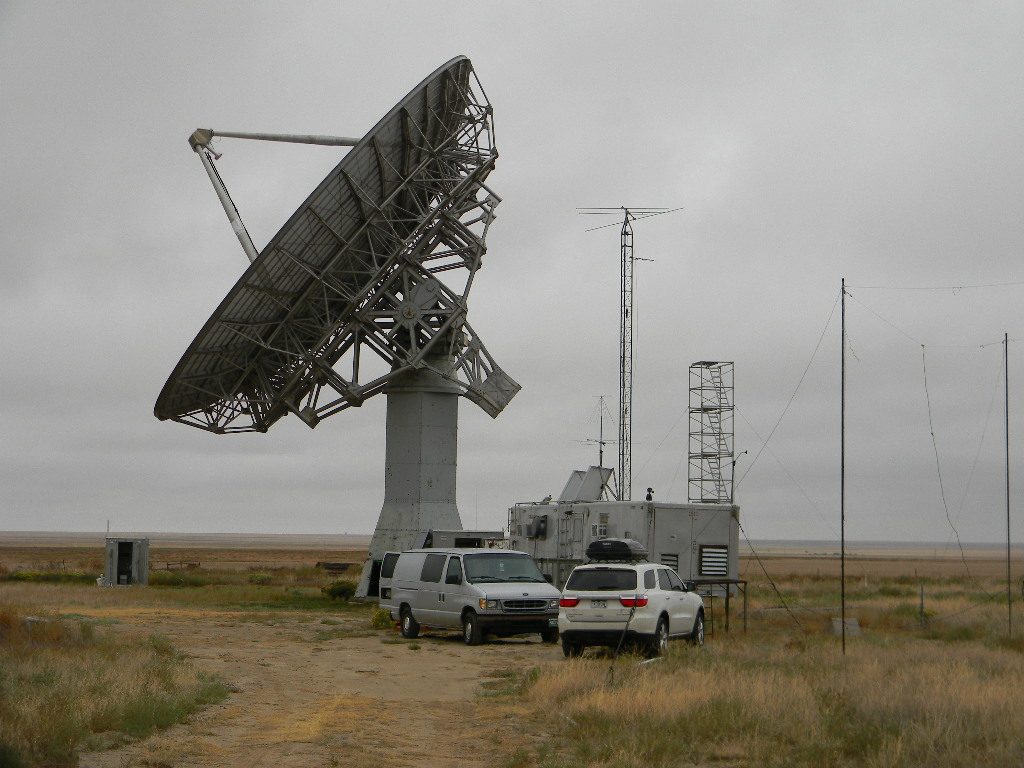
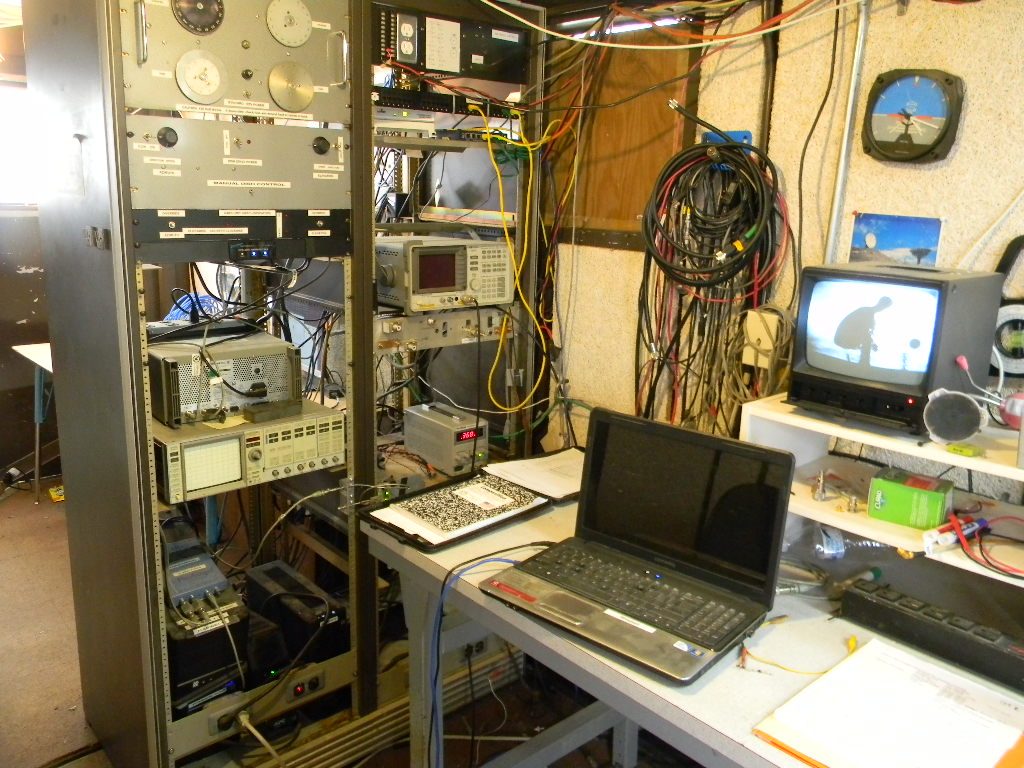
Bob worked at the Communications Trailer, doing carpentry and painting work. He built a wood frame seal around one of the air conditioners, fabricated and painted a seal for the solar-powered fan, and painted the third work table he had added previously. Bob told me the trailer back door hadn’t been sealing — until recently — because it actually had not been closed properly. He closed the door properly and it is now sealed, without requiring further work.
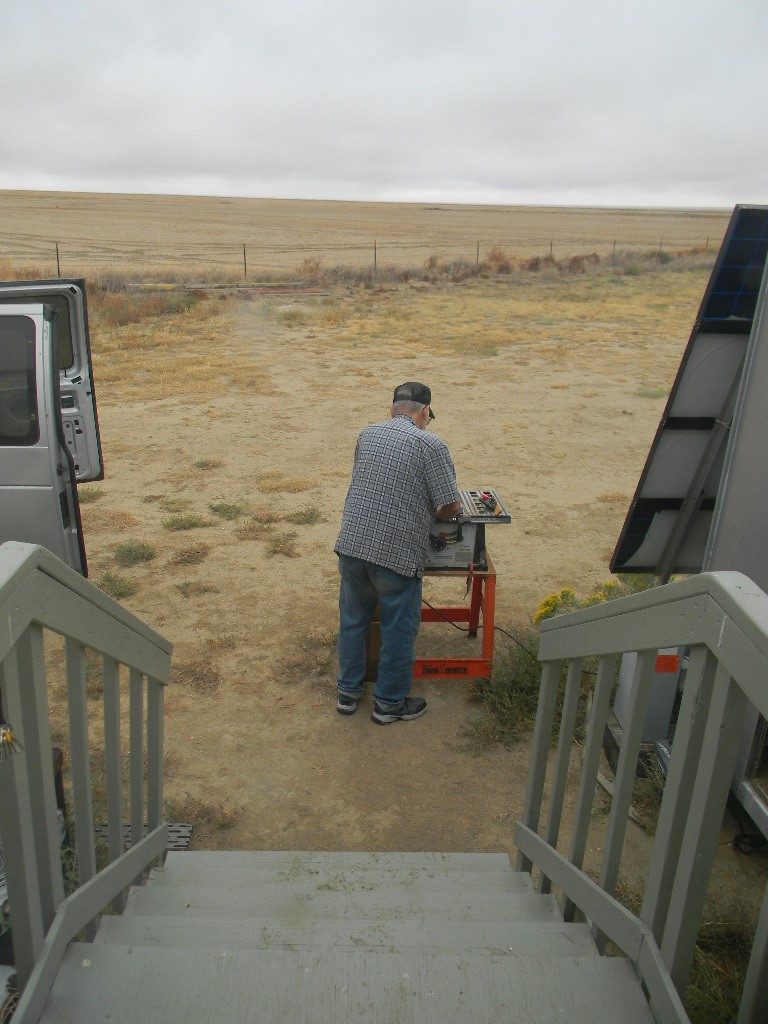
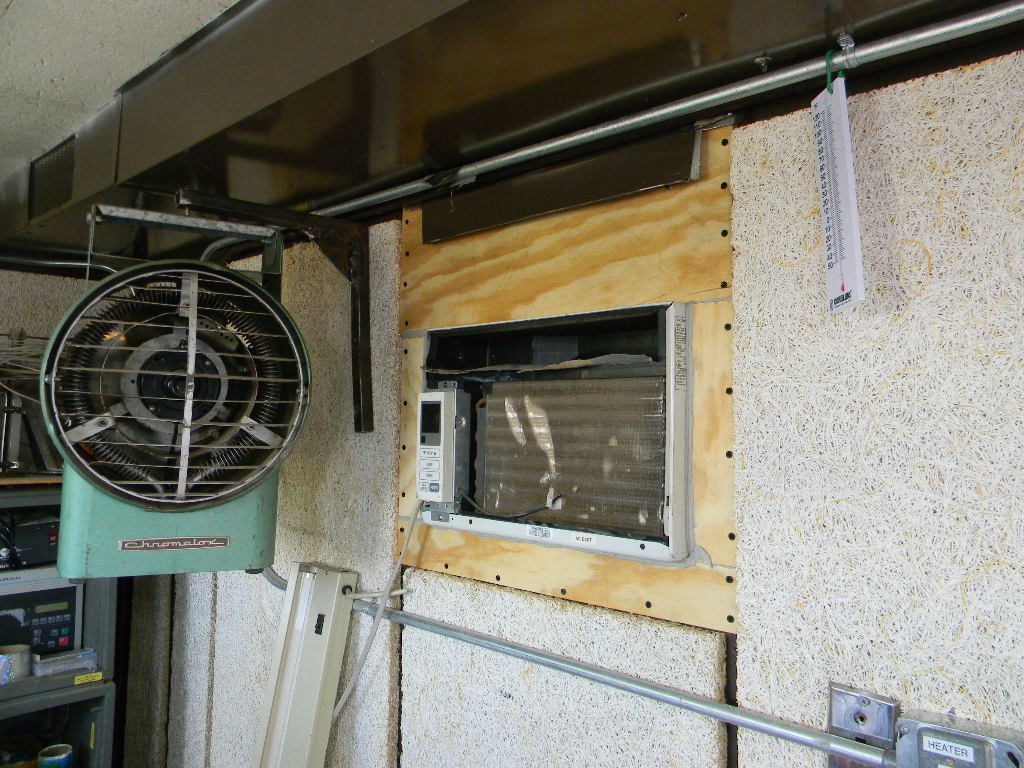
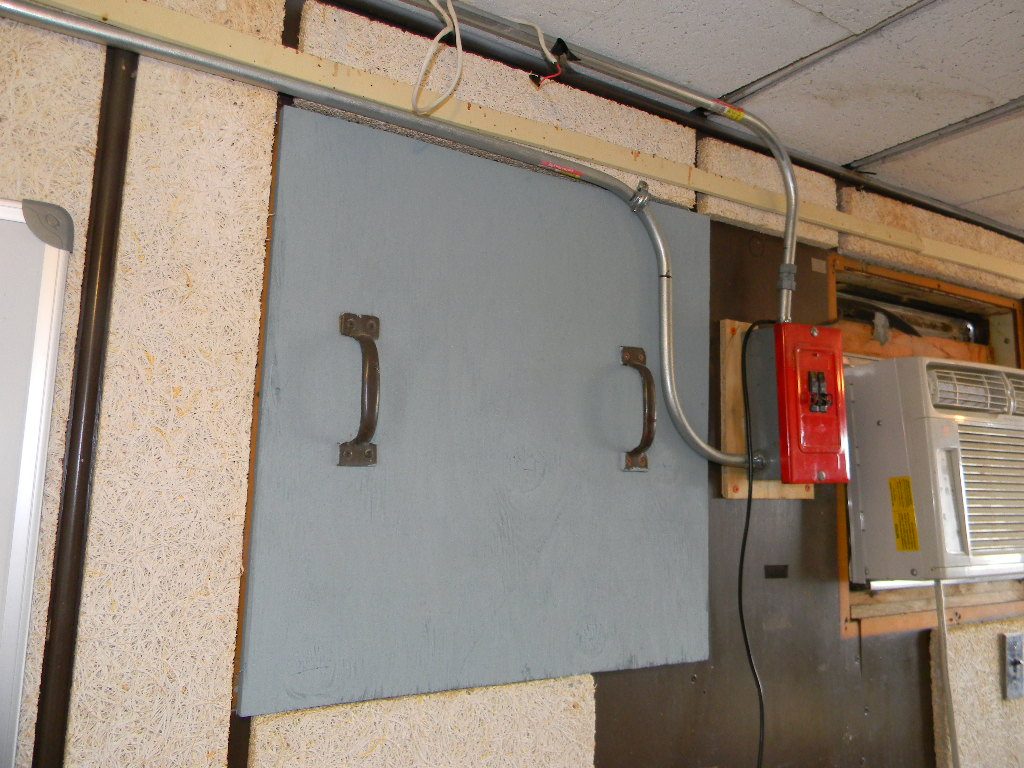

Bob’s third table adds workspace in the communications trailer, and also helps keep the space better organized as well.

Bill, Steve, and Gary worked on preparing the 50-foot ham radio antenna tower.
Bill spliced the controller feed cable and wires for the antenna rotator, and verified proper operation, with some assistance from Gary. Bill used Steve’s crimping tools. The three of us then fed the controller cable through the dog house to the tower.

At the tower outside, the rotator was attached to its base plate, and that assembly was then attached to the tower.

When we tried to fit the mast in the holding tube at the top of the tower, we found that top opening was slightly damaged, and the mast wouldn’t fit in. We then took turns filing and grinding out the hole until the mast did fit properly. Steve applied a lubricating grease, to mitigate against the mast binding stuck when rotating. Eventually we successfully installed the mast to the rotator itself. We also retrieved a guy wire cable left at the communications trailer and attached it as the third guy wire connection for the top of the tower.
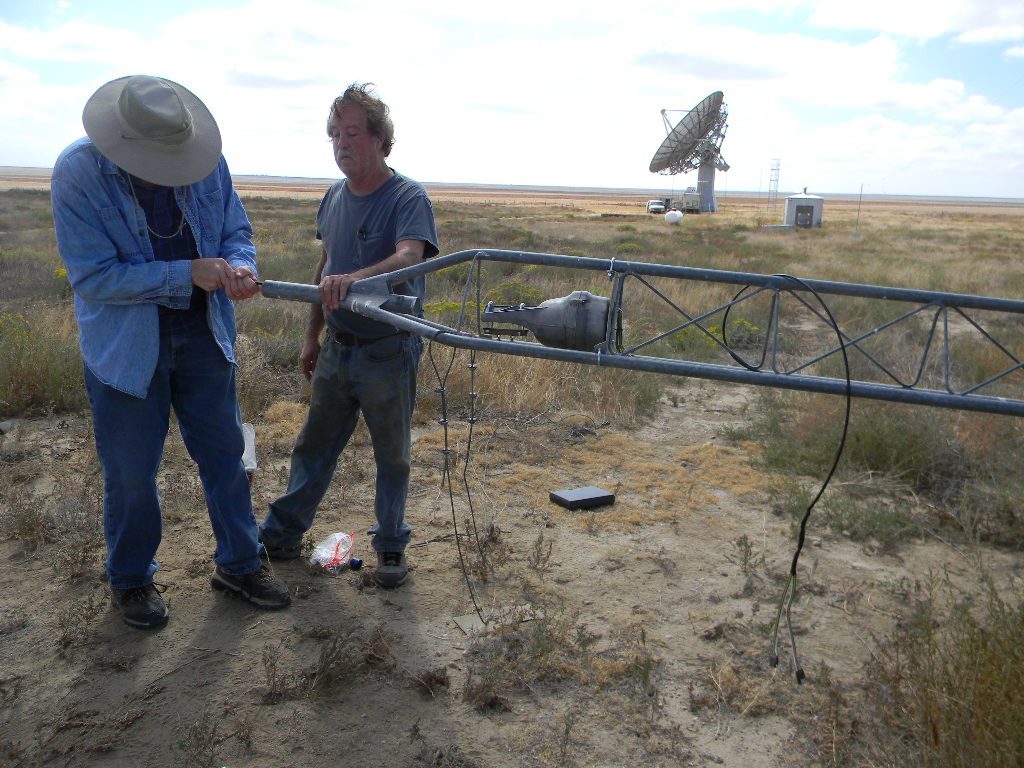
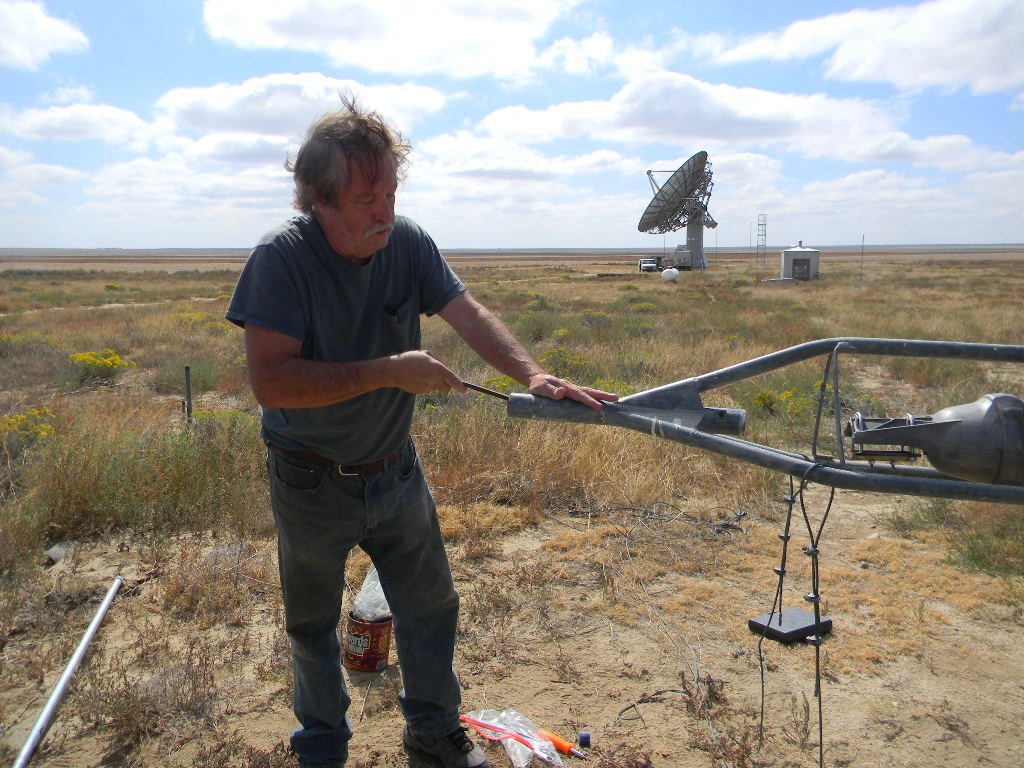
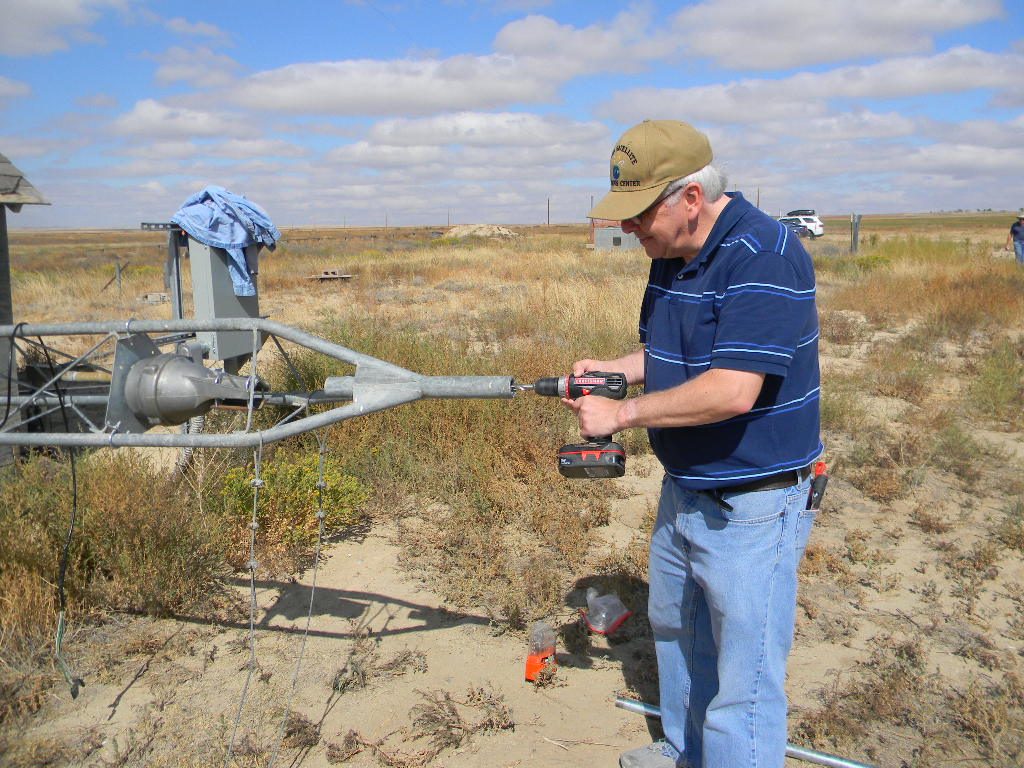
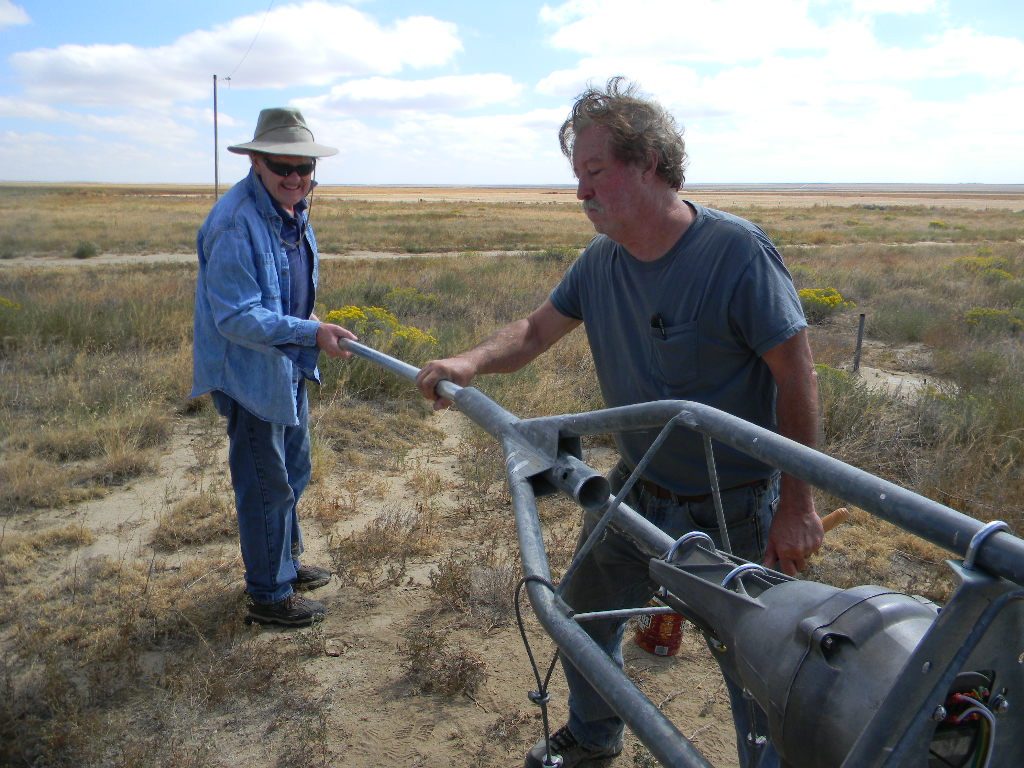
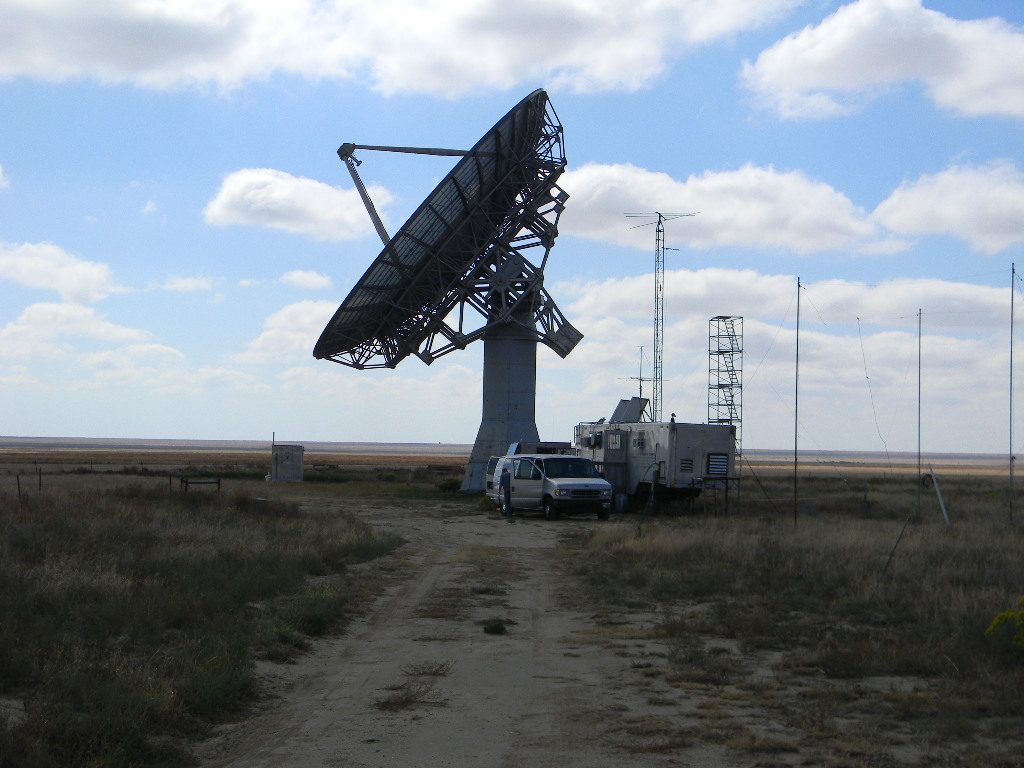
Before we left for the day, we had two visitors from Eads come to look at the site. We all spent a little while talking about the site and the work.
Addendum
By Gary Agranat
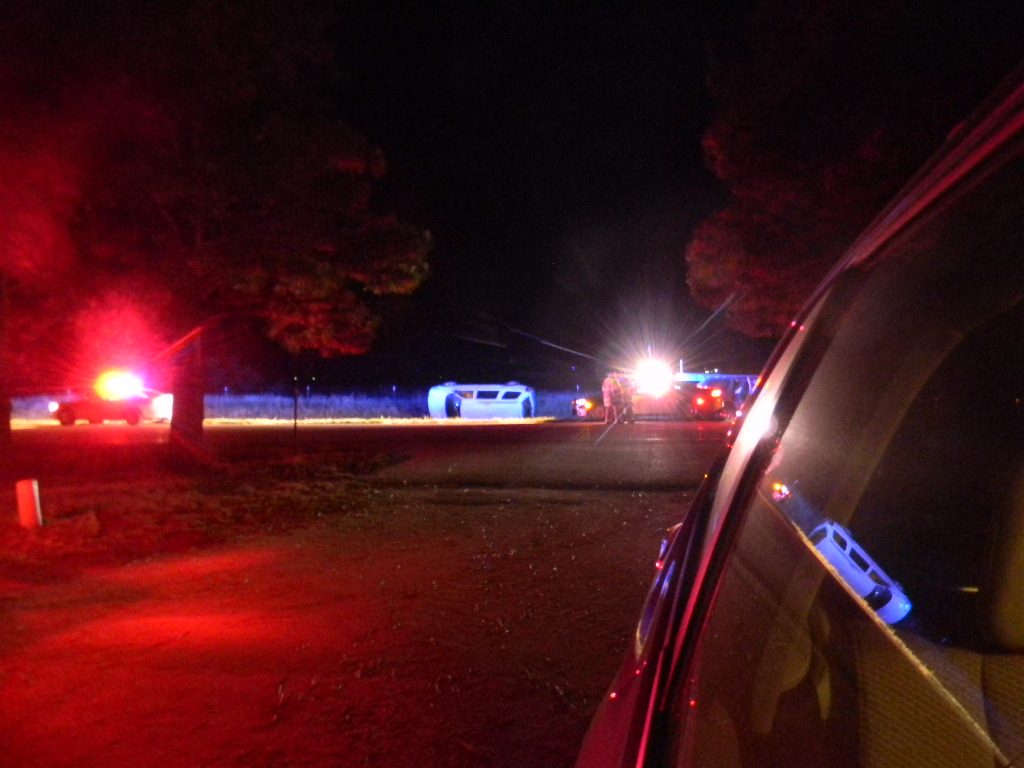
Bob was the first to leave, then Steve. Steve said he would check on Ed on the way home. Bill and I (Gary) convoyed out last.
While Bill and I were driving back to Colorado Springs, about an hour and a half into the trip back, an auto accident happened right in front of us, with a vehicle overturning.
The accident happened while we were driving westbound on Colorado Highway 94. It was early evening by then, about 5:30 pm, and the sun appeared above in the western sky. Bill and I had been talking on the VHF ham radio during our 2 1/2 hour drive back from the site. Bill was driving ahead of me.
A couple of miles before Rush, I saw three vehicles approaching from a long distance behind, moving faster than Bill and me, while we were going at about the speed limit. I mentioned the vehicles to Bill, and we stopped talking, anticipating they would choose to pass us soon. They did soon pass us, all three staying close to each other. We could see they were some sort of laborers, with equipment filling their vehicles and with ladders on top. The third vehicle passed us as we were going up a hill, with the solid yellow line on our side. Bill commented that car was taking risks, although they all were driving in a risky manner. There was no visibility over that hill. And furthermore we were driving into the sun. A couple of miles later we reached the town of Rush, where the speed limit lowers from 65 to 50 mph. As those three vehicles ahead approached the town, I suddenly saw the last one veer to the left side of the road, and then roll over, with its front turned facing the opposite direction. Bill and I both stopped, as did a driver heading in the oncoming direction who almost got hit. And several more cars stopped briefly. We saw one occupant lie in the grass, but he eventually got up.
Bill had a better view of the accident ahead of me. It looked to him like one of the three vehicles ahead suddenly slowed as he reached the town with the lower speed limit. The sun was right above and ahead of us, which created a greater visibility challenge. The sudden slowing apparently caught the last driver off guard, as he swerved to the right to avoid the vehicle ahead of him. But that put his right side of his car in the grass there, which caused a tire blowout and a swerve then to the left. And he overturned.
The volunteer fire department nearby responded relatively quickly. But we waited about 2 hours for a sheriff’s deputy to arrive, and then another hour for a State Patrol officer to arrive. The State Patrol was who we had to give our witness statements to. We didn’t finish with that until 8:30 pm, and I didn’t get home until 9:30.
The driver of the overturned vehicle eventually got up, but he refused medical help, although we wondered if he nonetheless might have been hurt.
Meanwhile the communities there are small, and everyone there knows everyone else. The other driver who stayed was a local woman school teacher. We chatted with her and also the volunteer firefighters, and with some of the neighbors who stopped to see if everyone was OK.
The State Patrol officer later explained to us that there were 6 accidents in the region called in within a period of 5 minutes, when our accident happened. One happened just about 9 miles further west from us on Highway 94, in the town of Yoder. That accident had injuries, and some of the firefighters who were with us then had to leave to respond to the other accident.
At a minimum, this is a reminder to take care to drive safely, especially with limiting conditions like the sun setting ahead.
